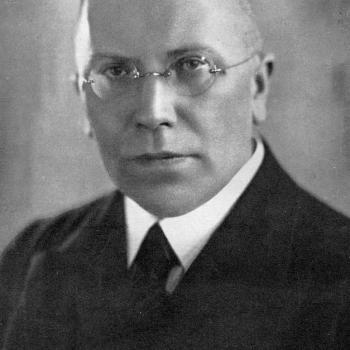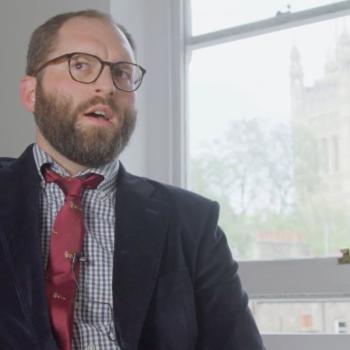If there should ever be a monument to the Second Amendment, it should be erected in Northfield, Minnesota. In this little college town in 1876, Jesse James and Cole Younger, with six other members of their gang, tried to rob the First National Bank, only to get shot up by an aroused citizenry. I just finished reading a new book on the subject, Mark Lee Gardner’s Shot All to Hell: Jesse James, the Northfield Raid, and the Wild West’s Greatest Escape .
.
I knew about the Northfield raid and when I spoke at St. Olaf College a few years ago, my hosts took me to see the bank and the marks of the bullets that still adorn the downtown buildings. But I did not know the details, nor did I know about the equally thrilling aftermath. Gardner’s book, while being sober history, reads like an action thriller, but what I most took away from the book was a glimpse of something we don’t see all that much anymore; namely, a genuine community, whose members look out for each other, protect each other, and pull together for the common good.The first three chapters of Gardner’s book tell about Jesse and Frank James, as well as Cole, Bob, and Jim Younger. They got their start in the neutral border state of Missouri as “bushwhackers”–pro-Confederate guerrillas–who battled their counterpart “Jayhawkers” on the Union side. We learn of the men’s complexities, talents, and grievances. They became outlaws after the Civil War, and although one can see why they attracted fans with their exploits, they were also cold-blooded killers. They robbed trains and banks all over Missouri, and then they headed north.
I’ll try to tell the story without spoilers. After carefully casing the “peaceful” town, three men went into the bank, with the other five staying outside on their horses to cover the robbery. Inside was the first act of heroism on the part of the ordinary folks of the town. The cashier just would not open the safe. The outlaws threatened him, beat him, and cut him, but he refused to do what they told him to.
During the delay, passersby looked into the window and saw what was happening. The word spread throughout the town. “Somebody is robbing the bank!” In those days before deposit insurance, as Gardner points out, everybody’s money was at risk. Those who lived in town got their guns. The owners of the two hardware stores loaded their entire stock of firearms and passed them out to people on the streets. Before long, the most formidable outlaws in the West were facing a hail of gunfire. A medical school student, who found an old .50 caliber breechloader with four paper cartridges in a stable, went to a second-story window and started picking off outlaws. A hardware store owner went to the corner of the bank building with his Remington and out-dueled Bob Younger. A druggist, the undertaker, farmers, apprentices, and Scandinavian immigrants all acted like heroes. An African-American man started throwing big rocks at the outlaws. The young women who were students at Carleton College, concerned lest the robbers would show up there, armed themselves with fire axes. Two of the townspeople were killed–including the cashier who refused to open the safe–but so were two of the outlaws, with most, if not all, of the others wounded.
Gardner’s blow-by-blow account of the attempted bank robbery and the ensuing gun battle was the subject of his fourth chapter. But there were five chapters to go! There is much more to the story. The surviving bandits fled the town, but the Northfield telegraph operator notified the surrounding communities, which, in turn, organized posses of citizens that tried to cut-off their escape. Some of the members of these posses–as well as the professional police force that came in from the big cities– didn’t really know what they were doing, so there were some Barney Fife moments. The outlaws, showing stamina and ingenuity worthy of their legends, slipped away again and again. But when the Youngers were cornered at Madelia, Minnesota, seven citizens–led by a sheriff and a Civil War combat veteran–marched into the brush to flush them out, leading to yet another thrilling gun battle that the ordinary folks won.
Then we see how the citizens of Madelia treated the outlaws once they took the survivors into captivity. They gave them food, new clothes, and medical care. (Cole Younger had taken 8 bullets.) They protected them from the threat of lynching. Townspeople, caught up with the celebrity of the criminals, crowded into the jail to see them. But they wept over them. They prayed for them. The outlaws themselves wept and prayed.
The good-heartedness of these frontier citizens and their sense of community struck me as much as their physical courage. We see the hospitality of the farm folks who were willing to give traveling strangers something to eat and shelter, no questions asked. We see a doctor who set out in the middle of the night on horseback when he got word that a woman was sick 23 miles away. The outlaws exploited this generosity–stealing the farmers’ horses and taking the doctor hostage–but these were communities, made up of men and women who cared about each other. And they even cared about the outlaws whom they defeated, doing so not just by keeping and bearing arms but by acting like a community.
.















